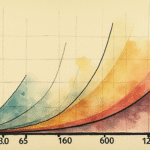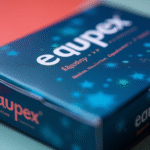Introduction
During the second quarter of 2025, Mexican industrial companies displayed a clear bifurcation in their performance. While some firms capitalized on structural trends like nearshoring and infrastructure investment, others continued to face a challenging environment with squeezed margins, lower demand, and adjusted expectations for the rest of the year.
Uneven Sector Recovery
The data reflects that the sector recovery is not uniform; instead, there’s a marked duality. The key seems to be each issuer’s adaptability to the current environment: those exposed to trends like nearshoring, electric vehicle transition, or logistics solutions have maintained growth and profitability. Meanwhile, those relying on global cycles or weak domestic markets continue to show declines.
Infrastructure and Transportation: The Driving Force
IDEAL:
IDEAL led the pack among issuers in this segment, reporting adjusted revenues of 6.623 billion pesos (+15.1% a/a) and EBITDA of 6.920 billion pesos (+29.1%). This outcome was driven by a 6.4% growth in vehicle traffic, the start of new stretches like Cardel–Poza Rica and Tuxpan–Tampico, as well as fare adjustments linked to inflation. The recovery of the Acapulco Macro Tunnel also contributed to operational advancement.
Though net utility decreased due to lower financial income, prospects for 2Q25 remain favorable.
PINFRA:
Traditionally viewed as a defensive issuer, PINFRA reported revenue growth of 14% and an almost 80% operating margin. The company continues executing significant projects like the Michoacán Package and Rumbo Nuevo, maintaining a conservative financial structure with net debt at just 0.84x its EBITDA.
GMXT:
GMXT also capitalized on logistics services’ dynamism, reporting revenues of 16.672 billion pesos (+10%) and EBITDA of 7.370 million (+17%). The automotive and agricultural segments led growth, with EBITDA margin remaining stable at 44.2%. Despite increased debt due to higher investments, the operation continues showing resilience in a favorable environment for goods transportation.
Nemak: Profitability in a Volatile Automotive Environment
Nemak faced a -4.1% volume contraction but improved profitability. EBITDA grew 11.7% to 182 million USD, with a 14% margin. This was supported by better product mix, more profitable contracts, and increased operational efficiency. Its strategy focused on electric vehicle components has shown significant progress, with contracts in Europe and North America opening room for future growth.
Petrochemical and Consumption: No Clear Recovery Signals
Alpek:
Alpek had a challenging quarter. Revenues fell 13%, and comparable EBITDA dropped by 21%, affected by weakness in the polyester market and logistics cost pressure. The company reduced its annual EBITDA guidance, though it managed to stabilize cash flow and refinance debt under favorable conditions.
Orbia:
Orbia maintained stable revenues but reported a 10% lower EBITDA, along with another net loss for the second consecutive quarter. Polymer Solutions and Building & Infrastructure remained weak, while Agriculture, Energy, and Connectivity showed resilience. The company maintains its annual guidance, hoping for a gradual improvement in the second half of the year.
Rotoplas:
Rotoplas also faced challenges, with an 18.1% EBITDA drop. Although the services unit grew by 16.7%, its EBITDA, operating, and net margins remain negative. The company remains focused on digitalization and water treatment solutions, with results potentially reflecting later.
Outlook: Structural Divergence and Selectivity
Moving into the second half of 2025, the Mexican industrial sector will continue facing a mixed environment. Issuers exposed to infrastructure, logistics, and specialized manufacturing are better positioned to capitalize on the economic cycle’s recovery, nearshoring impetus, and continuity of public and private projects.
In contrast, companies dependent on internal consumption or industries still adjusting, like petrochemicals, might continue facing pressure. In this context, selectivity will be crucial. Efficiency execution, maintaining healthy margins, and aligning with megatrends like electrification, sustainable mobility, and industrial relocation will differentiate winning issuers in an uncertain but showing occasional opportunity environment.
Key Questions and Answers
- Q: What is the overall performance of Mexican industrial companies in Q2 2025?
A: The Mexican industrial sector displayed a clear bifurcation in performance. Some firms capitalized on structural trends like nearshoring and infrastructure investment, while others faced challenges with squeezed margins, lower demand, and adjusted expectations.
- Q: Which sectors are performing well?
A: Companies exposed to infrastructure, logistics, and specialized manufacturing are better positioned for growth due to the economic cycle’s recovery, nearshoring impetus, and continuity of public and private projects.
- Q: Which sectors are struggling?
A: Petrochemical and consumption-dependent companies continue to face pressure, with weak domestic markets and global cycle dependencies.
- Q: What factors determine a company’s success in this environment?
A: Efficiency execution, maintaining healthy margins, and aligning with megatrends like electrification, sustainable mobility, and industrial relocation are crucial for differentiating winning issuers.






